We recently witnessed a discussion on social media in which someone said that two 16 AWG wires could do the same work as a single 8 AWG wire. Unfortunately, the American Wire Gauge standard for stranded conductors isn’t intuitive in helping determine how multiple conductors can pass current. So let’s get geeky and do the math on how much current different-sized or multiple conductors can handle. We know it’s not something that comes up daily, but it’s an interesting topic.
The American Wire Gauge Standard
The American Wire Gauge standard for describing the cross-sectional area of a conductor was created in 1857. Knowing the area of a conductor is crucial to picking the correct size wire for a specific current-carrying application. For example, a small wire, perhaps one with a diameter of 0.1 inch, won’t be able to handle 50 amps of current without going up in smoke.
The AWG standard has a direct diameter-area relationship between one size and the next. For example, the diameter of a 10 AWG wire is 1.1229322 times the diameter of an 11 AWG Wire. The exact ratio applies to any two adjacent wire sizes. As such, the ratio of wire size to diameter is logarithmic, as the size doesn’t increase linearly. The chart below plots the data.
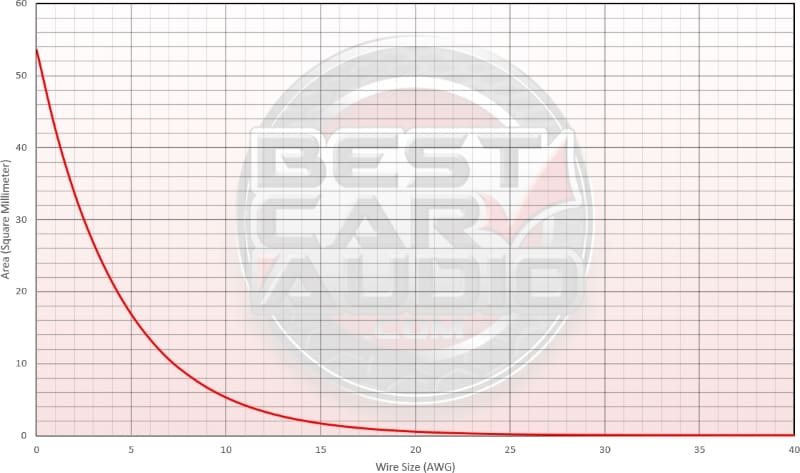
Given that the relationship is logarithmic, it’s tough to determine an equivalency between conductors. For example, if you have an 1,800-watt amplifier installed, it will need more current carrying capacity than a single 4 AWG conductor can provide. Does it need a full 0 AWG conductor? Well, it can’t hurt. But would two 4 AWG wires work? That’s what we have set out to determine.
Metric Wire Sizes
Just so you’re aware, Europe and Asia use metric wire sizes. While they use metric for most things, Canada still uses the AWG standard. For example, a 4 AWG power wire is sold as a 25mm2 wire across the ocean. It should come as no surprise that calculating equivalent current carrying capacities using the metric system is very simple.
There seems to be a discrepancy, however. If you look up 4 AWG in the above chart, it has an area of 0.03286 square inch. That’s equivalent to 21.2 square millimeters. An area of 21.2 is a lot less than 25 square millimeters.
Let’s look at another size. Most charts specify that a 10 AWG is equivalent to a 6-square-millimeter conductor. However, the American Wire Gauge chart lists it as 5.26 square millimeters. Clearly, some averaging is done at some point in the process. Even when trying to be accurate, it seems someone has taken a lackadaisical approach to math.
Power Wire Current Carrying Equivalency
One accurate fact we have is a resistance measurement for the different AWG sizes of copper wiring. This specification is part of the American Wire Gauge standard. We can compare the resistance of differently sized wires regarding their current carrying capacity. We’ve created a chart that compares standard wire sizes from 20 to 0000 AWG to other sizes.
Using the chart is simple, though perhaps not intuitive at first. Let’s start with some simple observations. Any cell with the same wire size will have a number 1. This indicates that the resistance is equivalent, which, of course, makes sense.
Let’s say we have a 4 AWG conductor and want to know its resistance compared to a 2 AWG conductor. Start by looking across the top row for the 4 column, then look down at the row represented by the 2. We see a number of 0.625. This means a single 4 AWG wire can carry 62.5% of the current of a 2 AWG conductor for the same voltage drop.
We can compare them the other way by looking across the top for the 2 column and then comparing it to the 4 row. Here, we see the number 1.6. This means a 2 AWG conductor can carry 1.6 times as much current as the 4 AWG for the same voltage drop.
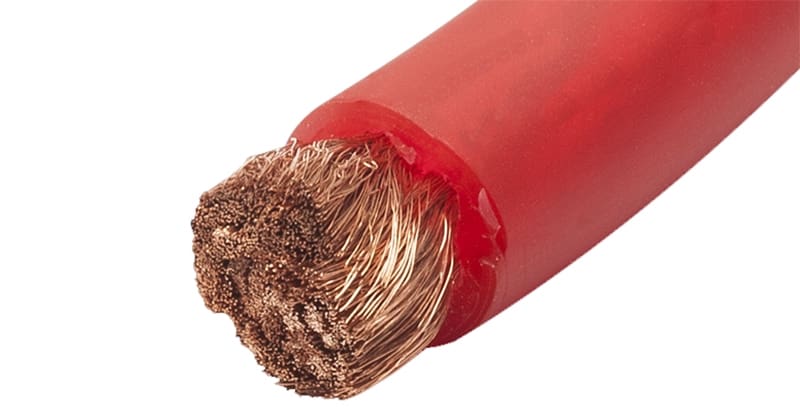
Multiple Conductor Evaluation
The table also gives us information on how much current multiple conductors might handle to be equivalent to something more significant. So, how many runs of 4 AWG are comparable to a single 0 AWG cable? Look across to the 0 column, then down to the 4 row. We see the number 2.514. This means we need 2.514 runs of 4 AWG to pass the same amount of current as a 0 AWG cable with the same voltage drop.
A better example would be comparing a 6 AWG cable to a 0 AWG. Here, the ratio is 3.971. So, effectively, you need four runs of 6 AWG to equal a single 0 AWG.
Now, let’s get back to what started this discussion. How many 16 AWG wires are required to be equal in current-carrying to a single 8 AWG wire? If we go to the 8 column and then down to the 16 row, we see the number 6.389. This means you need more than six runs of 16 gauge to pass the same current as a single 8 AWG conductor. Six would have more resistance, and seven would have less than the 8 AWG.

Voltage Drop Look-Up Table
While understanding how much current a single or multiple conductors can pass, we need a standard for an acceptable voltage drop. This is a bit complicated as it considers conductor size, current requirements and the length of the wire. The ANSI/CTA-2015 Mobile Electronics Cabling Standard uses a voltage drop of 0.25 volt. For an electrical system providing 14.4 volt, that’s a drop of 1.7% across a single run of wire. We’d likely see the same drop along the ground path.
Please refer back to our article about conductor ampacity (how much current a wire can handle) to determine what’s suitable for a specific application.
Not All Wire Is Created Equally
Before we close out, we should remind our readers that this chart only works for all-copper, full AWG-spec conductors. The resistance will be different if you are looking at a tinned wire. If the wire is copper-clad aluminum, the chart doesn’t apply. If the wire label says gauge instead of AWG, it’s likely not full AWG sizing.
Be wary of these shortcuts and differences. You are buying something unique. Though the tinned wire might be a much better choice for marine applications, tin has only 15% the conductivity of pure copper. You may want to go up a wire size in a marine application to ensure reliable power delivery.
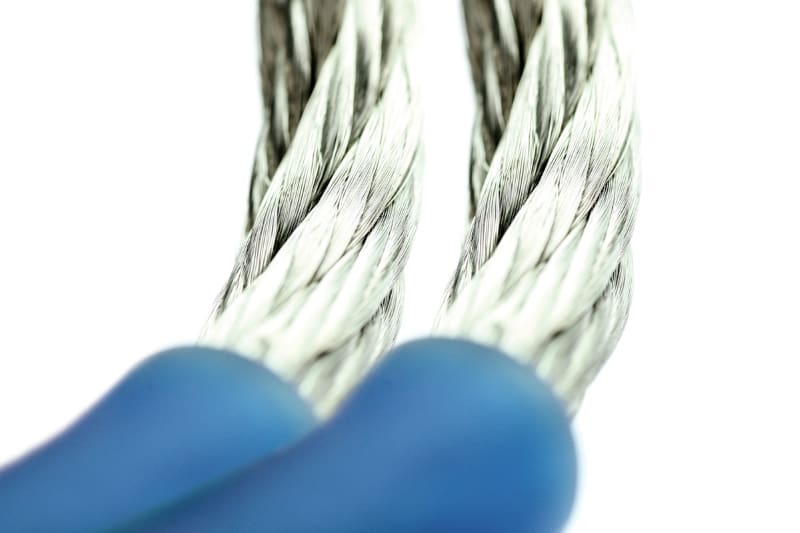
Be Sure To Get The Right Size Wire For Your Car Audio System
Be sure to discuss with the product specialist or technician designing the audio system for your vehicle what size wire they’re using. Before the project starts, understand whether it’s a single run of wire or multiple. This handy chart and a basic understanding of electrical theory from high school will ensure that your audio system performs reliably. Or, at the very least, you won’t make a statement that two 16 AWG wires are the same as a single 8 AWG.
This article is written and produced by the team at www.BestCarAudio.com. Reproduction or use of any kind is prohibited without the express written permission of 1sixty8 media.
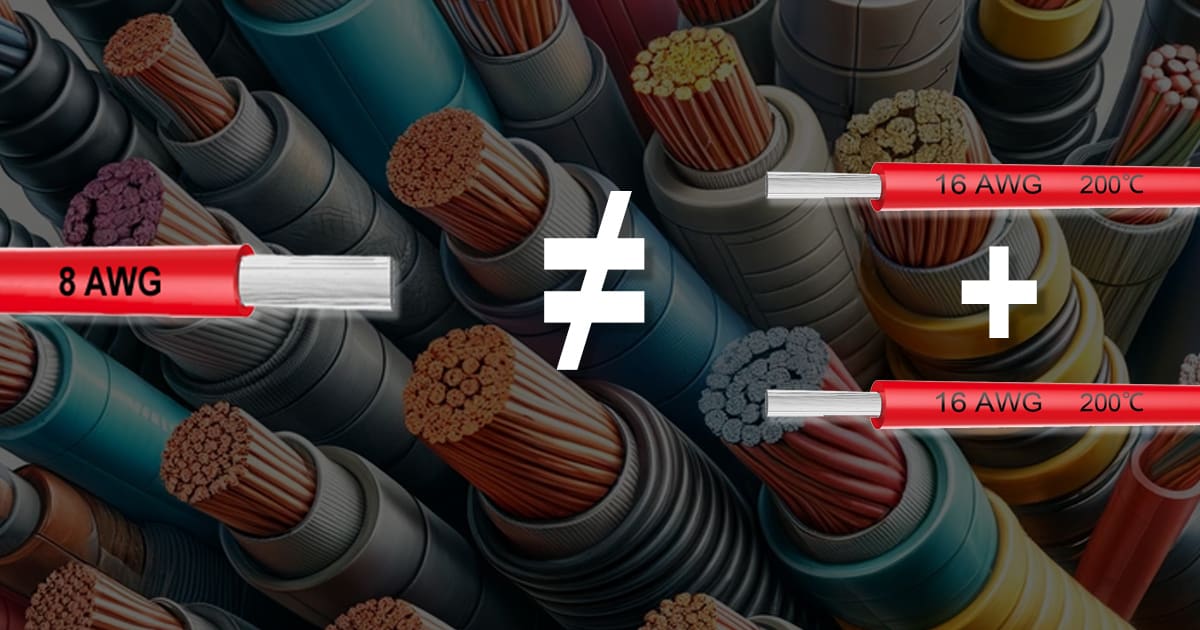
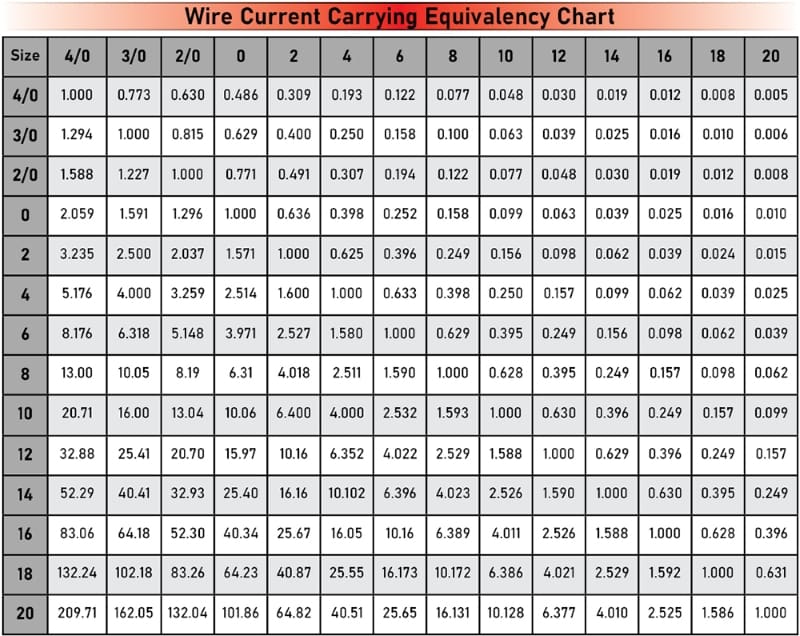
Leave a Reply